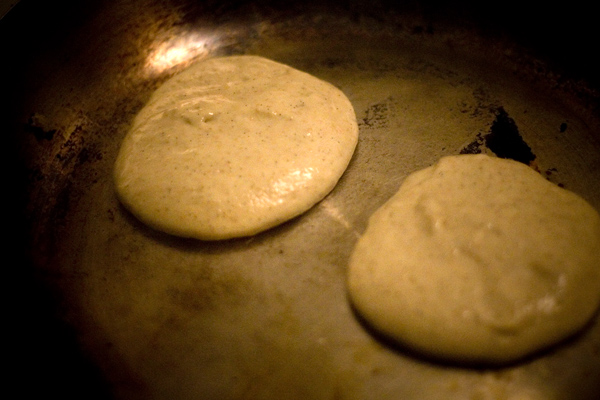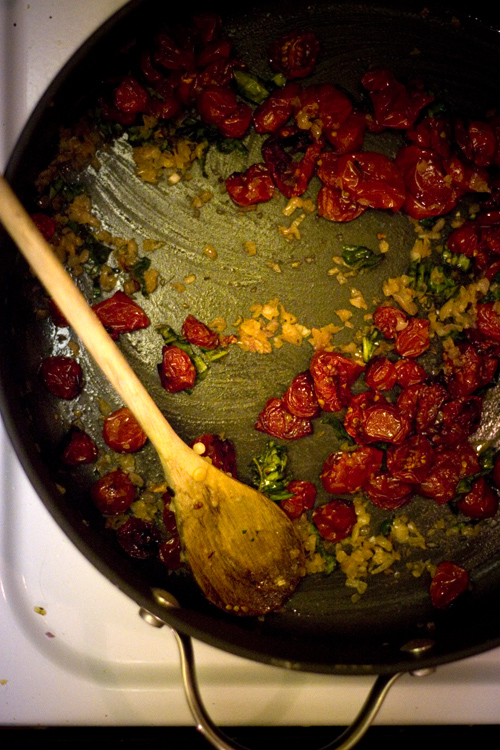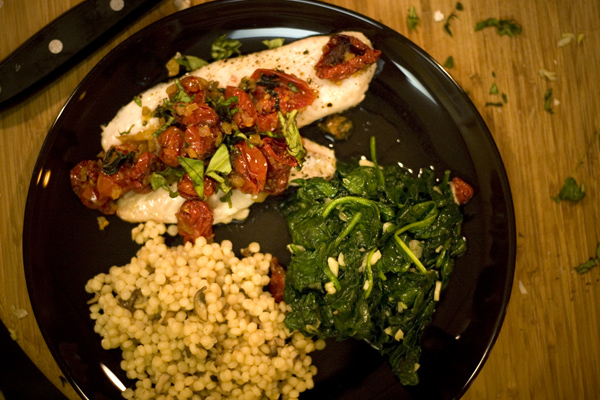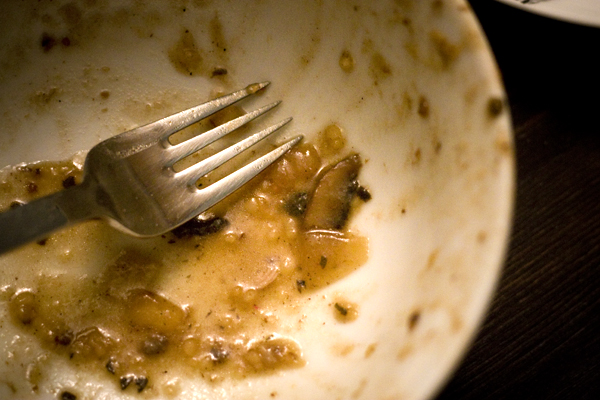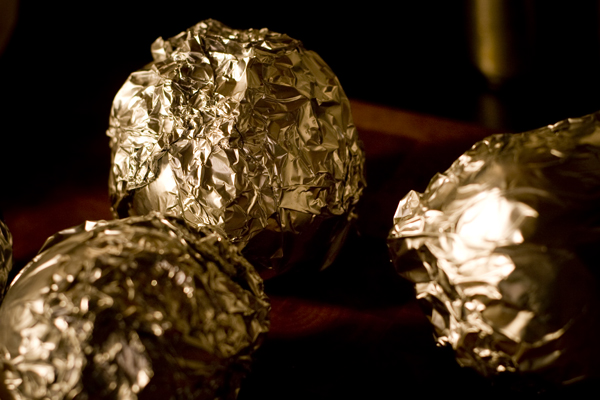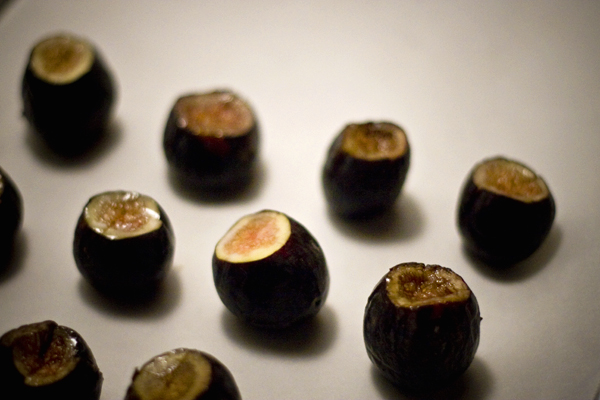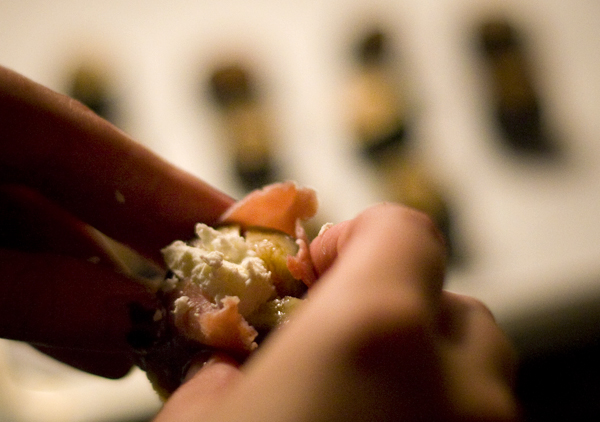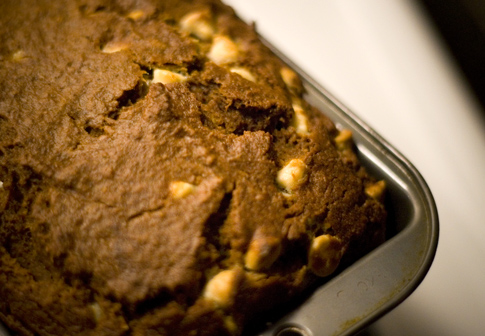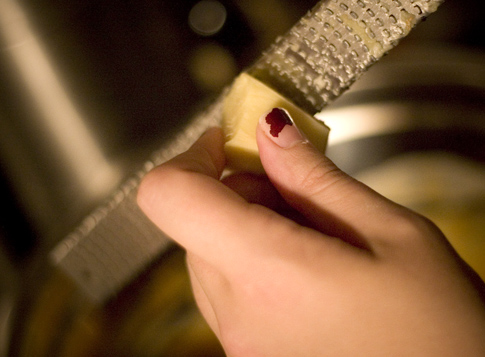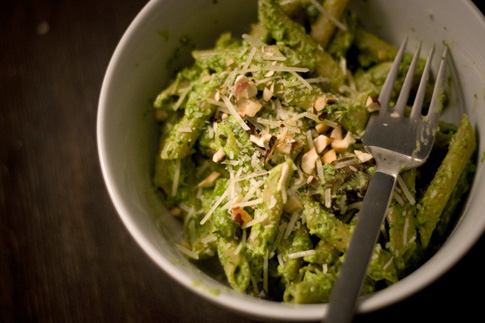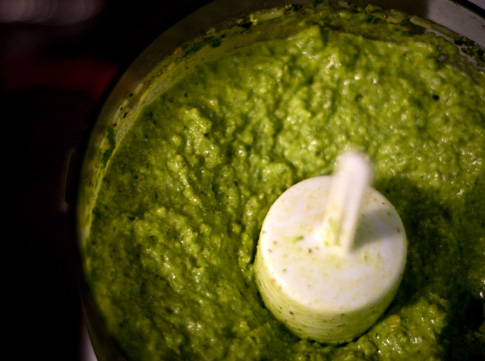
I had a wonderful first grade teacher we called Mrs. L. She played guitar and taught us to sing "If I Had A Hammer." We memorized Shel Silverstein and Robert Frost poems and wrote "books" of our own, illustrating them and writing dedications and all (that was my favorite part.) We counted down one hundred days of school and celebrated the hundredth with a hundred-yard dash, one hundred pieces of popcorn, and any number of other countable things in hundred-unit quantities.
At some point during that year (probably exactly this time of year) we baked pumpkin bread in her classroom and brought home a slice with the recipe. My mother—though a bit wary of the snot and dirt that might be incorporated into first grade classroom cooking—saved the recipe, and it's the one I still follow every fall. I know Shiv already recommended a pumpkin bread recipe, but the more the merrier, right? And hey, it's Halloween!

Today I played around a bit, adding tart cranberries and orange zest and substituting a bit of whole-wheat flour, throwing in a sprinkle of cloves and quarter-teaspoon of molasses—I'm not sure the recipe would still be recognizable to Mrs. L. She'd probably still recognize me, though. I don't look that different from how I looked back then.

Pumpkin-Cranberry Bread
Adapted from Susan Lohrer
Sift together in large bowl:
1 1/2 cup flour (I used 1 cup all purpose and 1/2 cup whole wheat flour.)
1/2 teaspoon salt
1 C sugar
1 teaspoon baking soda
Mix in small bowl:
1 cup pumpkin puree
1/2 C cooking oil
2 eggs (whisked)
1/4 teaspoon each cinnamon and nutmeg
zest of one small orange
sprinkle ginger, cloves
1/4 teaspoon molasses (optional)
1 cup fresh cranberries, picked through (frozen is probably fine, don't thaw, just throw them in.)
Combine pumpkin mixture with flour mixture. Do not mix too thoroughly. Stir in cranberries. Pour into a greased loaf dish (original recipe says "well-Pammed." Does anyone use that stuff anymore? Is it bad for the ozone layer?) Bake 50-60 minutes at 350. Loaf is done when a toothpick comes out clean. This recipe makes one loaf. Let cool before serving—the flavors mellow and this really is tastier about half an hour out of the oven.
Notes: If you make mini-loaves or muffins from this, the cooking time is shorter. The cranberries are optional and kind of tart. I like it that way, but this recipe is traditional and great without them.
Also, If you are left with some pumpkin puree and don't know what to do, I highly recommend this recipe for pumpkin orzo with sage.


